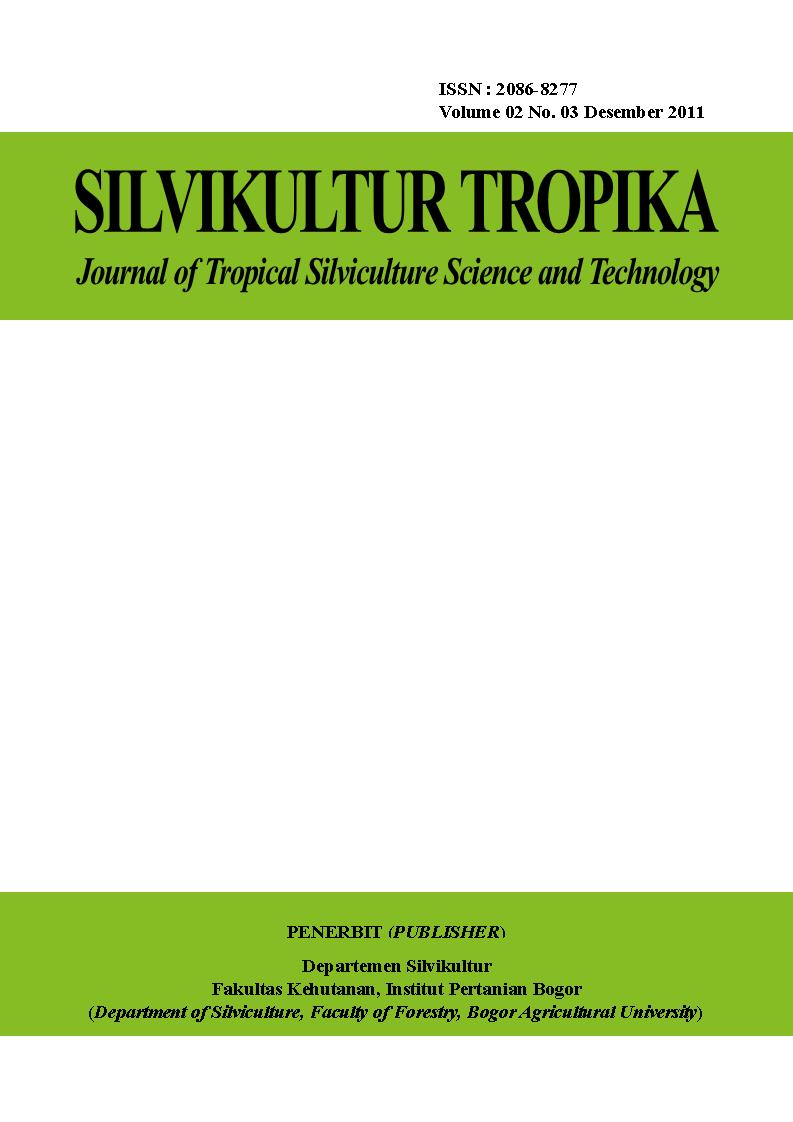Perbandingan Simpanan Karbon pada Beberapa Penutupan Lahan di Kabupaten Paser, Kalimantan Timur Berdasarkan Sifat Fisik dan Sifat Kimia Tanahnya
Abstract
The Comparison of Carbon Stocks on Some Land Cover at Paser, East Kalimantan Based on Its Soil Physical and Soil Chemical
Forest has a lot of direct and indirectly benefits for life. Direct benefits of forest are timber, non timber forest products and wildlife/fauna. While, indirect benefits of forest are the environment services as the hydrology regulator, aesthetic function, producer of oxygen and carbon absorber. Forest is the largest carbon absorber (sinks) and having an important part in the global carbon cycles, however forest can also produce a carbon emission (source). Forest ecosystem has ability to absorb and store different kinds of carbon even in the natural forest, mangrove, swamp, forest plantation and at the folk’s forest. The differences of carbon sinks are influenced by number and tree density, trees species, biotic factors which consist of radiation, humidity, temperature and soil fertility which affect the rate of
photosynthesis. The land fertility was determined by soil physical, soil chemical, and soil biological. Therefore, this research aims to compare carbon stocks on some land cover based on its soil physical and soil chemical.
The research was performed at some lands coverings of Paser, East Kalimantan in January to July 2011. Data was processed and analyzed in the Forest Influence Laboratory, Department of silviculture, Faculty of Forestry, Bogor Agriculture University and Land Laboratory, Land Research Hall. Measurement of biomass and carbon sinks were performed by using the diameter data of stand and height in each land covering. Analysis of soil physical temper (texture and soil bulk density) and soil chemical (pH, CEC, Ratio of C/N, P, K, Ca, and Mg) were performed to disturbed and undisturbed soils.
The result of research showed that mangrove forest had the greatest carbon sinks, that was 51.5031 tons/hectares. While, the lowest carbon sinks was on the palm oil plantation for 0.1046 tons/hectares. From soil analysis result was known that swamp forest tended to be more fertile compared with other land coverings. Whereas, palm oil plantation and agroforestry is indicated the lower of land fertility. The raising of soil physical and soil chemical’s value increase the carbon stocks on each land cover, exception of bulk density that decrease the carbon stocks. The result analysis correlation showed in insignificant value, its indicated by the value of r2 less than 99%(0,99) or 95%(0,95). Need to research about estimation carbon stocks on the other land cover, and compare the carbon stocks based on the other land characteristics, as topography and climate.










